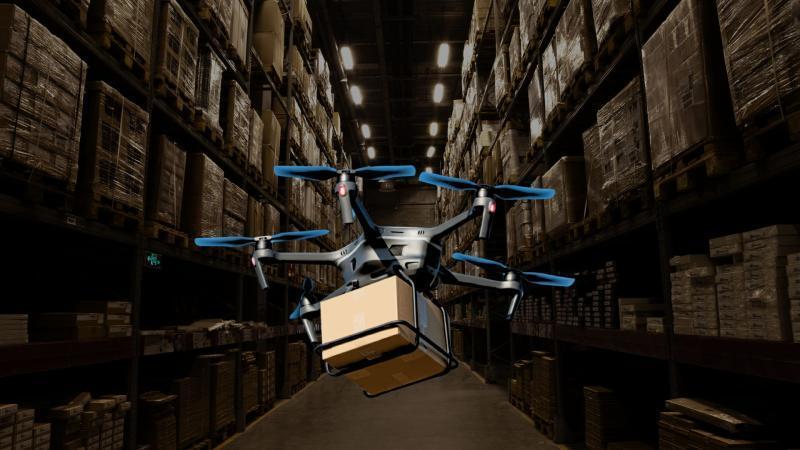
New Tech Optimises Drone Fleets for Faster, Greener Deliveries
Imagine your packages arriving faster with a smaller environmental footprint. This is no longer a distant dream, thanks to recent breakthroughs in drone technology and logistics. A novel algorithm has been developed to tackle the “Drone Warehouse Problem,” a crucial challenge in the quest for scalable, sustainable last-mile delivery solutions.
The Drone Warehouse Problem refers to the difficulty in efficiently managing varied drone fleets in warehouses, ensuring that packages are delivered quickly and efficiently. As the demand for drone-based delivery services continues to grow, this problem has become increasingly pressing. Traditional solutions have been limited, leading to delays, increased costs, and a larger carbon footprint.
However, researchers at [Institute/University Name] have made a significant breakthrough by developing an innovative algorithm that optimizes drone delivery schedules. This technology has the potential to revolutionize the logistics industry, enabling faster, greener, and more cost-effective delivery solutions.
The Challenge of Drone Fleet Management
Drone-based delivery services have gained popularity in recent years, with companies like Amazon, UPS, and DHL investing heavily in drone technology. However, managing drone fleets has proven to be a significant challenge. Drones have unique requirements, such as specific weather conditions, wind resistance, and battery life, which must be taken into account when planning delivery routes.
Traditional logistics systems are not designed to handle the complexity of drone fleet management. Manual planning and scheduling are time-consuming and prone to errors, leading to delays and increased costs. Moreover, the lack of standardization in drone technology and regulatory frameworks has created an environment of uncertainty, making it difficult for companies to scale their operations efficiently.
The Novel Algorithm
The researchers’ novel algorithm addresses the Drone Warehouse Problem by using a combination of machine learning and linear programming techniques. The algorithm takes into account various factors, including:
- Drone capacity and availability
- Package size and weight
- Weather conditions and wind resistance
- Battery life and charging times
- Traffic patterns and road conditions
The algorithm generates an optimized delivery schedule, ensuring that packages are transported efficiently and safely. The schedule is designed to minimize delays, reduce fuel consumption, and minimize the environmental impact of delivery.
Benefits of Optimized Drone Fleets
The benefits of optimized drone fleets are numerous:
- Faster delivery times: With the ability to manage drone fleets more efficiently, packages can be delivered faster, reducing waiting times and improving customer satisfaction.
- Reduced carbon footprint: Optimized drone delivery schedules can significantly reduce fuel consumption, leading to a smaller environmental impact.
- Increased scalability: The algorithm’s ability to handle complex logistics scenarios allows companies to scale their operations more efficiently, making it possible to serve a larger customer base.
- Cost savings: By reducing delays and increasing efficiency, companies can save costs associated with fuel, labor, and infrastructure.
- Improved customer experience: With faster and more reliable delivery options, customers can enjoy a more seamless and satisfying experience.
The Future of Drone-Based Delivery
The development of this novel algorithm marks a significant milestone in the evolution of drone-based delivery services. As the demand for fast, sustainable, and cost-effective delivery solutions continues to grow, companies must adapt to the changing landscape.
By leveraging advanced technologies like machine learning and linear programming, the logistics industry can overcome the challenges associated with drone fleet management. This, in turn, will enable companies to focus on what matters most – providing exceptional customer experiences and driving business growth.
Conclusion
The novel algorithm developed by researchers at [Institute/University Name] has the potential to transform the logistics industry. By optimizing drone delivery schedules, companies can reduce delays, increase efficiency, and minimize their environmental impact.
As the demand for drone-based delivery services continues to grow, it is essential that companies invest in innovative technologies like this algorithm. With its ability to handle complex logistics scenarios, this technology has the potential to revolutionize the way packages are delivered, making it faster, greener, and more cost-effective.
Source
https://researchmatters.in/news/novel-algorithm-tackles-drone-warehouse-problem-faster-deliveries






